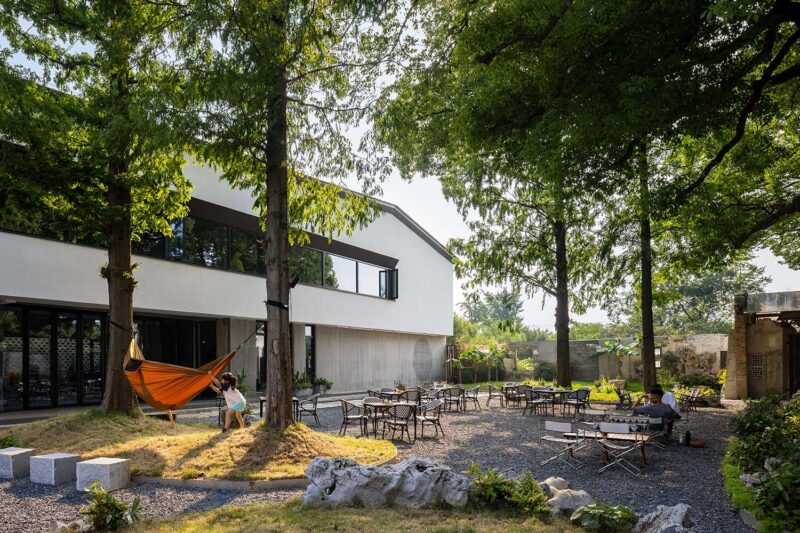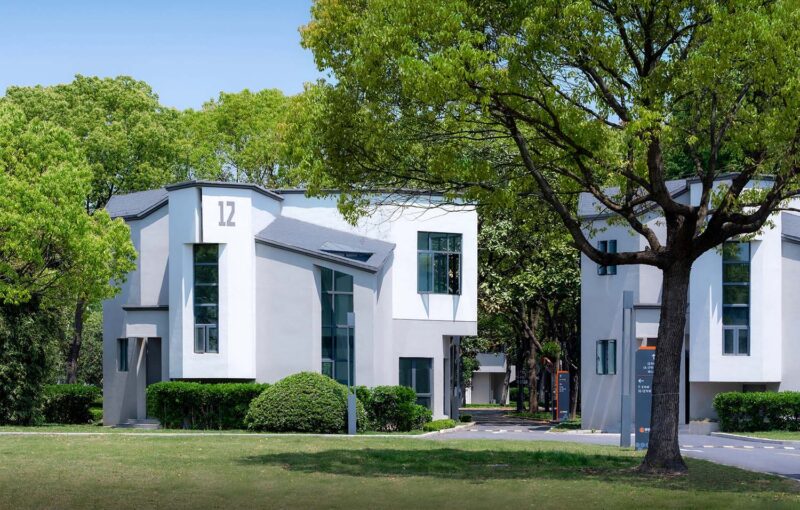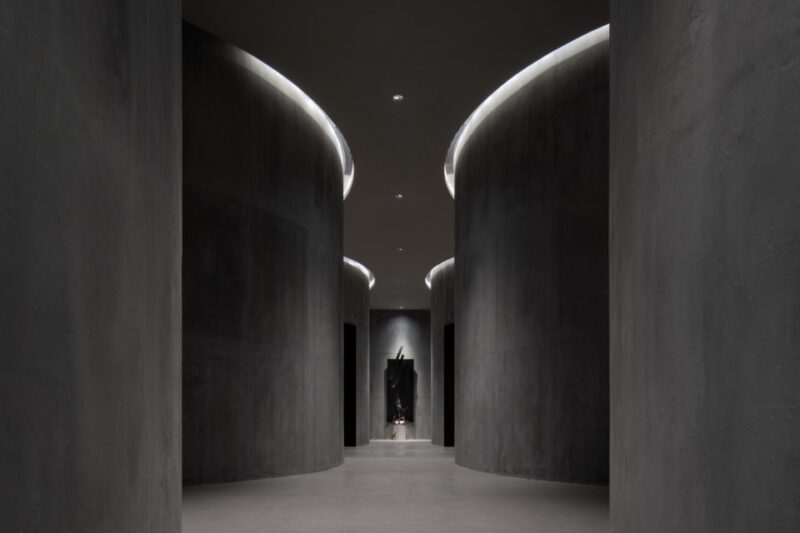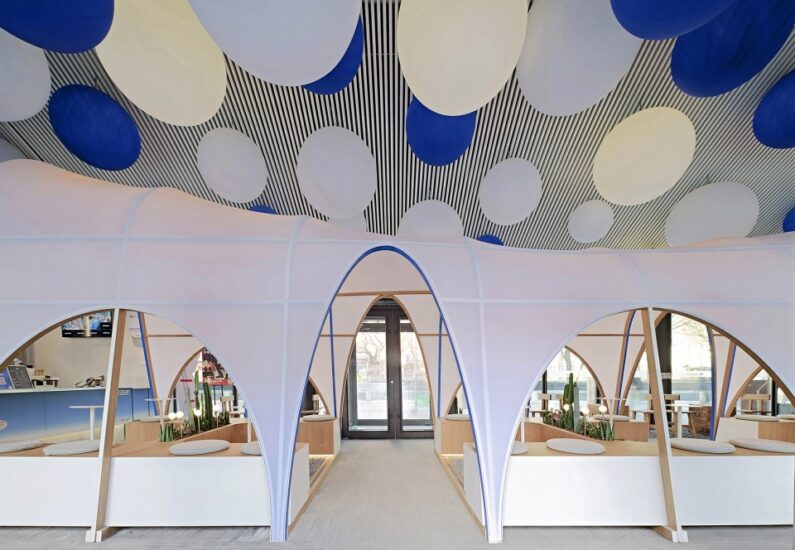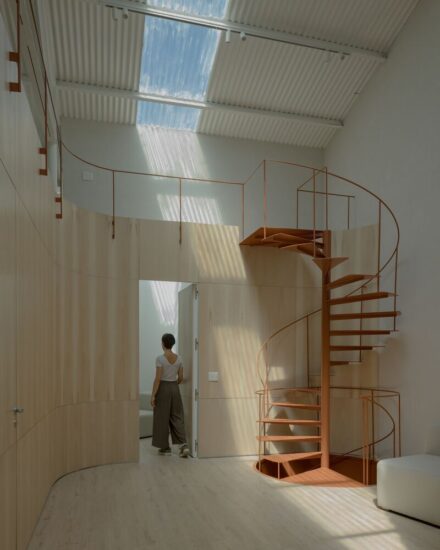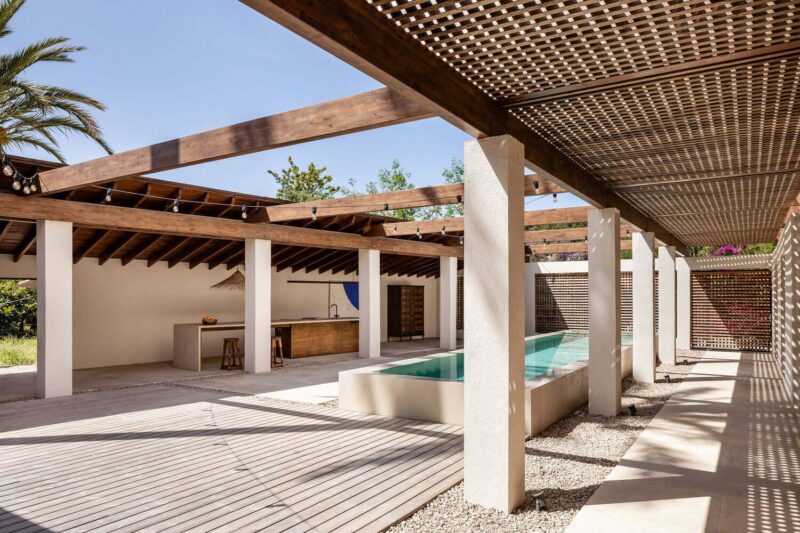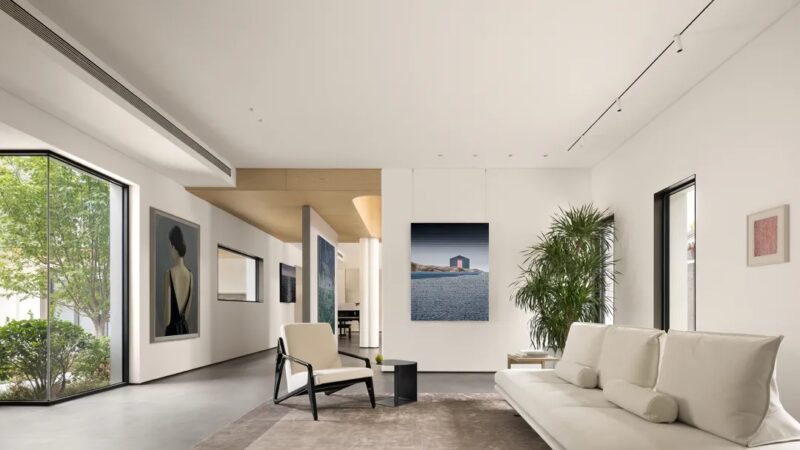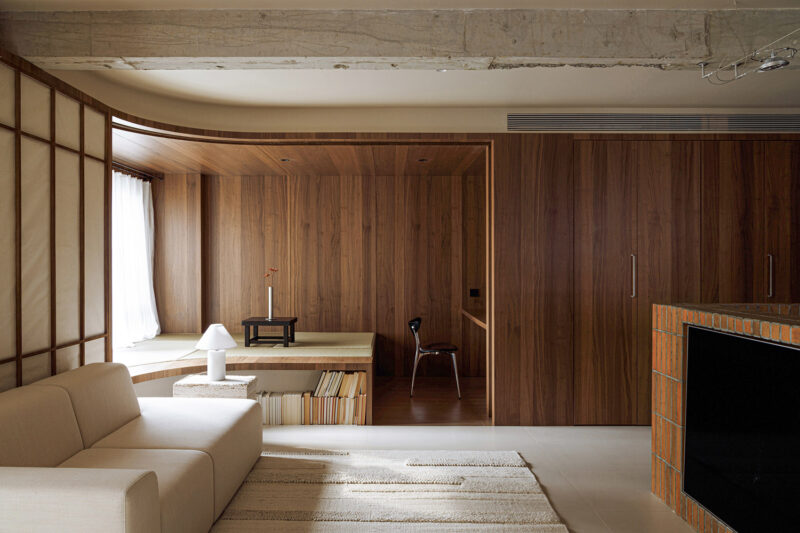LOFT中国感谢来自llLab.建筑事务所的餐饮改造项目案例分享:
坐落于北京市怀柔区长城脚下北沟村,“叁舍”的存在意义似乎比它字面的含义要宽泛得多。
Being situated in Beigou Village, Huairou, at the foot of the Mutianyu Great Wall, Beijing, such a space, seems to have much broader meaning than what it is being called.
它是一家新建乡村度假酒店的延伸建筑,体现了乡村中兴起的日益积极和城市化的交流方式,完美融合了截然不同的生活方式,是前所未有的一次文化复兴,暗示着中国的乡村地区开始像城市一样被分割。或者,它仅仅只是一个用餐空间?
A profitable extension of a newly constructed village resort, a more proactive and urbanized manner of communication emerged in the village, a sweet integration of originally contrasting life styles, an unprecedented cultural renaissance, a hint of the rural areas of China starting to be sliced apart as how it happened in the cities, or it is merely a space for food?
作为一个空间,“叁舍”具有模棱两可的特点。它的潜在属性可能远远超越其本身的设计意图。中国目前正处于文化转型时期,因此“叁舍”的定位和价值尚未明确,具有无限的潜力。
It is ambiguous as a space that the potential attributes of it may far exceed what it intended to achieve, in the culturally transitional period of a country that itself is uncertain about its own identity and the value of it.
从表面上看来,这是一个由农民居所厨房重建和改造而成的餐厅,提供最能代表老北京文化的北京传统火锅。然而,它呈现了独特的地理位置、历史背景、设计风格及建造方式,此前给到的命名似乎都不能确切地体现出这些特点,除非使用一个十分概括性的名称。
Superficially, this is a place reconstructed and transformed from a farmer’s home kitchen to a restaurant that serves the traditional Beijing hotpot which is one of the most typical representation of the Old-Beijing-Culture, however, the location, the historical background and how the space has been designed and constructed, make any of its given names imprecise, unless being very general.
在当前这个特殊时期,人们对设计的追求愈加凸显,中国仍然是开展试验的最佳地点之一,但城市地区提供的机会越来越少。中国建筑师们对建造乌托邦式建筑的热情日益高涨,而实际的建筑需求却在急剧下降,这一冲突也促使他们转变一贯熟悉的思维和发挥想象,纷纷倾向于创造只寄托自己情感的建筑。
At such particular moment, when the pursuit of design becomes increasingly visible which makes China seem to be probably still one of the best places to experiment, the opportunities in the urban areas continue to shrink. The conflict between the booming eagerness to create utopian architecture in China and the dramatically decreasing demand, shifts the possibilities to imagine, from where architects in China are familiar with to where are interestingly considered as places that architects are only emotionally attached to.
如此一来,建筑师们设计的许多建筑千篇一律,大多意在反映特定文化的复兴或特殊的社会运动,这样的重复使这些建筑变得麻木、无意义。
As a result, all relevant creations which are meant to be the revival of certain types of culture or the sensitive reaction to particular kinds of social movements turn out to be repetitively numb and senseless.
那么叁舍的设计意图究竟是什么呢?
它由一间农民居所的厨房重建和改造而成,是一个老北京火锅餐厅,包含6类不同的空间功能,能容纳各类活动。这些空间功能可以在精神上和形式上同时相互独立,不相关联。
Then what exactly is the place designed for?
It is a place that has been reconstructed and transformed from a farmer’s home kitchen to an Old-Beijing hotpot restaurant, which consists of six types of spatial qualities that accommodate a variety of activities that are possibly not either spiritually or formally capable of being associated.
它是一个特殊的、被寄予期望的建筑,如果能让人们不愿对其下定义,至少可以说明它不至于太过于麻木。
There is a specific desired program, yet, it will be less numb if it makes people feel reluctant to define.
∇ 改造前
∇ 改造前
∇ 平面图
∇ 原始空间结构
∇ 入口&外立面分析
∇ 庭院分析
∇ 空间属性分析
完整项目信息
项目名称:长城脚下的乡情驿站——叁舍/A Nostalgic Space at the foot of the Great Wall – San She House
项目位置:北京市怀柔区慕田峪长城北沟村
项目业主:2049投资集团
项目面积:400 平方米
设计年份:2018年4月-2018年7月
项目状态:已完工
布局规划:火锅餐厅/啤酒花园/活动空间及其他
建筑事务所: llLab.( www.lllab.net)
主创设计师:刘涵晓、路易斯·里卡多(Luis Ricardo)
团队成员:密李华、 刘成飞、张毅,汤诗溢,黄万
合作公司:上海滴翠园林绿化有限公司
主要材料:石膏板(泰山)、水泥(金隅及钻牌)、上下水管(联塑)、电线电缆(小猫)、涂料(立邦)、断桥铝(忠旺)、大芯板(金秋)
摄影师:刘涵晓
LOCATION:Beigou Village, Huairou, Mutianyu Great Wall, Beijing
CLIENT:2049 Investment Group
AREA:400 m2
YEAR:April 2018 – July 2018
STATUS:Completed
PROGRAM:Hotpot Restaurant / Beer Garden / Event Space and Others
ARCHITECT:llLab. (www.lllab.net)
CHIEF DESIGNER:Hanxiao Liu, Luis Ricardo
TEAM:Lihua Mi, Chengfei Liu, Yi Zhang, Shiyi Tang, Wan Huang
COLLABORATORS:Shanghai Di Cui Landscaping Co., Ltd.
MAIN MATERIALS:Gypsum boards (TAI SHAN), cement (BBMG, ZUAN PAI ), water supply
pipes and downcomers (LESSO), electrical wires&cables (XIAO MAO),
paint (Nippon), thermally improved aluminum (ZHONG WANG),
blockboards (Jinqiu)
PHOTOGRAPHER:Hanxiao Liu



















































